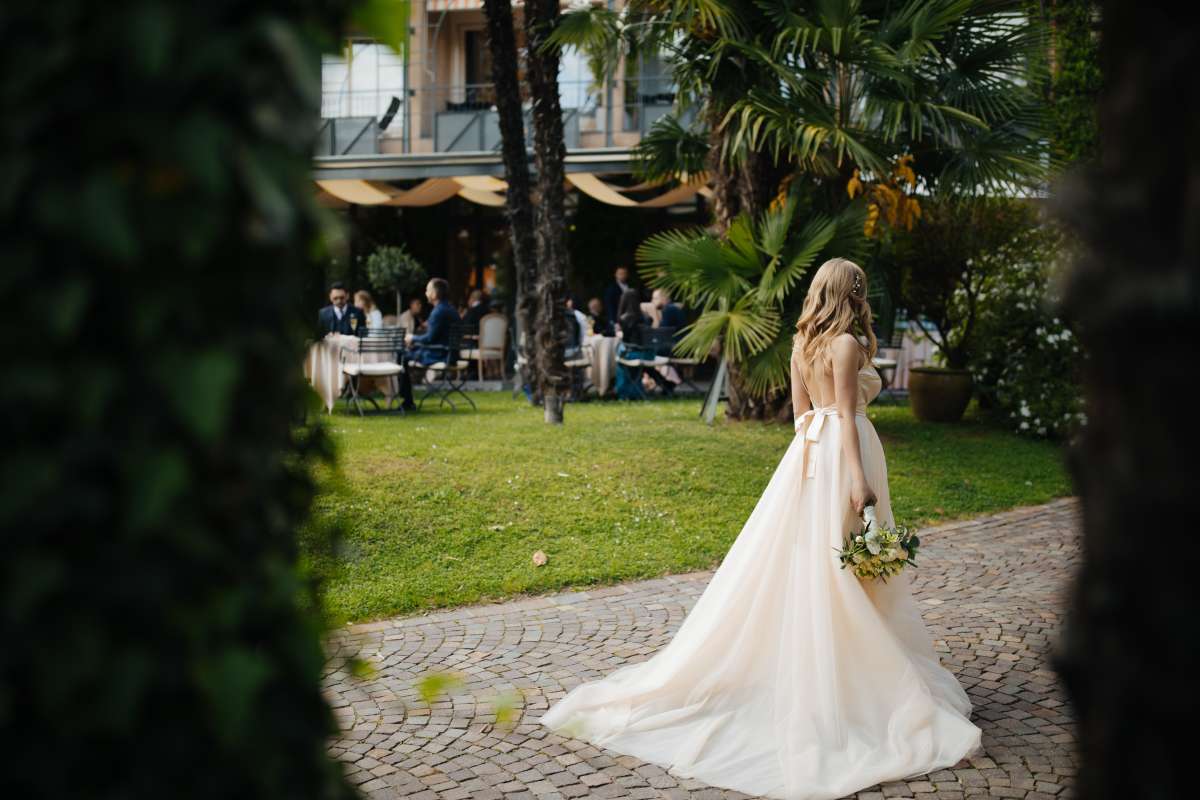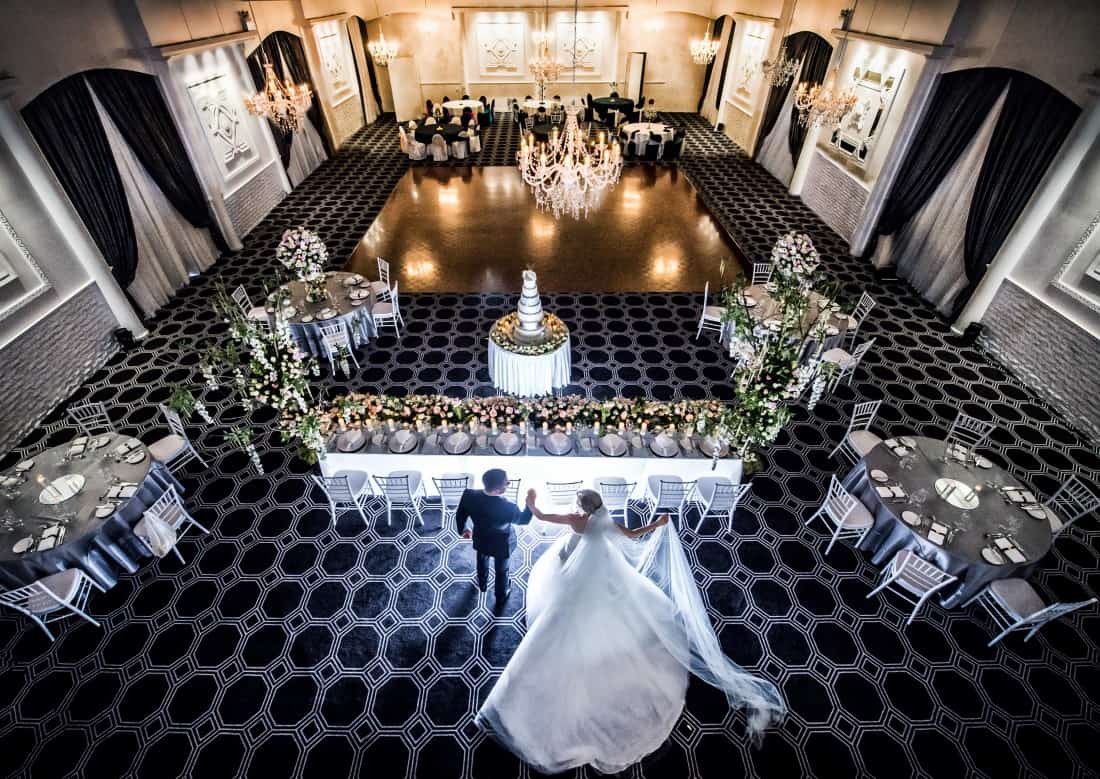Your wedding dress is likely the most expensive garment you’ll ever own. After wearing it on your special day, the decision of what to do with it arises. Some brides wish to preserve their dress, ensuring it remains pristine for years. However, how long should you preserve your dress? And what are the best methods?
Let’s Get Straight to the Point
Preserving a wedding dress is essential to preserving it for years. It involves cleaning to remove stains from the wedding day and preserving the dress from yellowing, discolouration, and damage caused by time.
Properly preserved dresses can become family heirlooms, but fabrics may turn yellow, develop stains, or deteriorate without preservation. Preservation is costly and should be done by professionals. Store your dress in a cool, dark place, and avoid plastic to prevent moisture damage.
Preservation And Cleaning: What’s The Difference?
Wedding dress preservation involves taking steps to prevent the effects of time, including yellowing and staining, from damaging the gown. This process differs from standard cleaning, which mainly removes visible stains. While both steps are necessary for long-term care, preservation goes beyond cleaning to protect the dress’s fabric and details over time.
Should You Clean or Store Your Wedding Dress?
It’s essential to clean your wedding dress soon after the event, even if you intend to wait to wear it again. Cleaning removes stains that could lead to permanent damage. If you wish to keep your dress as an heirloom, you’ll also want to opt for professional preservation.
- When cleaning is enough: A thorough cleaning will suffice if you sell or donate the dress. Platforms offer services to help brides sell dresses, prioritising cleaning before sale.
- When to preserve: Preservation is vital if you’re hoping to pass the dress down or keep it as a cherished keepsake. This ensures your gown stays intact for future generations, free from the wear and tear of time.
Should I Get My Wedding Dress Preserved?
Deciding whether or not to preserve your wedding dress is a personal choice. However, preserving it properly ensures your gown lasts a lifetime.
Why Is Wedding Dress Preservation Important?
Your wedding gown represents one of the most special days of your life. For many brides, it holds sentimental value, and preserving it can turn it into a family heirloom. Without proper preservation, your dress may turn yellow, develop brown spots, or even become a target for mould or mildew.
- Fabric Yellowing: Over time, the untreated natural fibres in your wedding dress can turn yellow. Preserving the gown can prevent fading and ensure its original colour remains intact.
- Oxidation Spots: Stains not removed during cleaning can oxidise and turn brown over time.
- Mould and Mildew: Improper storage in humid environments can cause mould and mildew to grow on the gown.
- Permanent Creasing: Wedding dresses stored improperly can develop long-term creases that may be difficult to remove later.
Preservation Vs. Regular Dry Cleaning
Due to the delicate fabrics and intricate detailing of most wedding gowns, more than standard dry cleaning is needed. Wedding dress preservation involves a custom treatment plan tailored to the specific needs of your gown. This includes careful inspection for stains, followed by professional cleaning and preservation using acid-free materials to prevent long-term damage.
Proper Handling And Storage Of Your Wedding Dress
When transporting or storing your gown, take precautions to prevent damage:
- Hang with care: Use loops sewn into the side seams to hang the dress. Never hang the gown by the shoulders, as this can cause stretching.
- Avoid plastic: Don’t store your gown in a plastic bag for extended periods. Plastic can trap moisture, leading to yellowing and mildew.
- Flat backseat: If transporting your dress, ensure it has enough space to lay flat, especially if it has a long train.
- Steam safely: If your gown needs steaming, check the fabric’s care instructions to avoid damage.
Invisible Stains And Preservation
Many brides may be unaware of invisible stains that develop during the wedding day, such as those caused by white wine or sweat. These stains can oxidise and darken, making professional cleaning and preservation essential. Wedding dress preservation specialists are trained to identify and remove even the most subtle stains.
How Long Can You Store Your Dress?
If done correctly, wedding dress preservation is designed to last a lifetime. It’s vital to store your preserved dress in a cool, dark place away from extreme temperature changes. Attics and basements should be avoided as they can cause humidity and temperature fluctuations, leading to mildew or discolouration.
What To Avoid
Be wary of companies offering unusually low prices for preservation services. Cheap options may result in substandard cleaning or preservation techniques that could damage your dress. Always opt for a provider with a proven track record.
Is It Safe To Ship Your Dress For Preservation?
Surprisingly, shipping your dress for preservation can be just as safe, if not safer, than using a local dry cleaner. Most local dry cleaners send wedding gowns to specialised companies for preservation because they lack the necessary equipment. Reputable preservation services will include insurance in their packages, ensuring your gown is covered during transit.
Proper Storage For Preserved Gowns
Once your dress has been cleaned and preserved, it will typically arrive in a sealed box. This helps to maintain its pristine condition. Store your dress in a cool, dark area, such as a closet or under the bed. Resist the temptation to open the box, as doing so may compromise the preservation. Some preservation companies offer transparent boxes to admire your gown without unsealing it.
Tips For Preserving Your Dress
- Do not store in plastic: Avoid plastic garment bags for long-term storage as they can trap moisture and lead to mildew or discolouration.
- Keep it cool: Ensure the storage area is cool and dark to prevent exposure to sunlight and humidity.
- Handle with care: If you ever need to remove the dress from the box, ensure it is re-preserved by a professional to maintain its condition.
Long-Term Benefits Of Preservation
Preserving your wedding dress goes beyond simply storing fabric; it’s about safeguarding the cherished memories of your special day. Wedding dresses are often made from delicate materials like lace, silk, or tulle, which can deteriorate over time due to environmental factors such as humidity, light exposure, and dust. Proper preservation ensures that these fragile fabrics remain as vibrant and intact as they were on your wedding day, preventing yellowing, stains, and fabric decay.
Investing in professional preservation also allows future generations to wear or repurpose gowns. A well-preserved wedding dress can become a family heirloom, passed down to daughters or granddaughters. It allows them to incorporate it into their weddings, either as the main gown or by incorporating elements such as lace or beading into a modern design.
Moreover, preserving your wedding gown keeps the sentimental value intact. The dress is a tangible reminder of one of the happiest days of your life, and proper preservation helps you retain that connection, ensuring the dress remains a lasting symbol of love and joy for many years to come.
Preserving your wedding gown is a wise investment that ensures your dress remains in perfect condition for years to come. By taking the proper steps to clean and store your gown, you can safeguard it from yellowing, stains, and other damage caused by time and improper storage. Whether you plan to pass it down as an heirloom or cherish the memory, wedding dress preservation is a decision you won’t regret.




